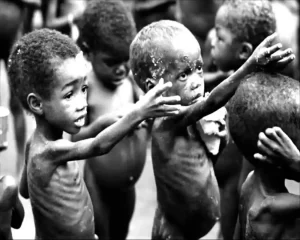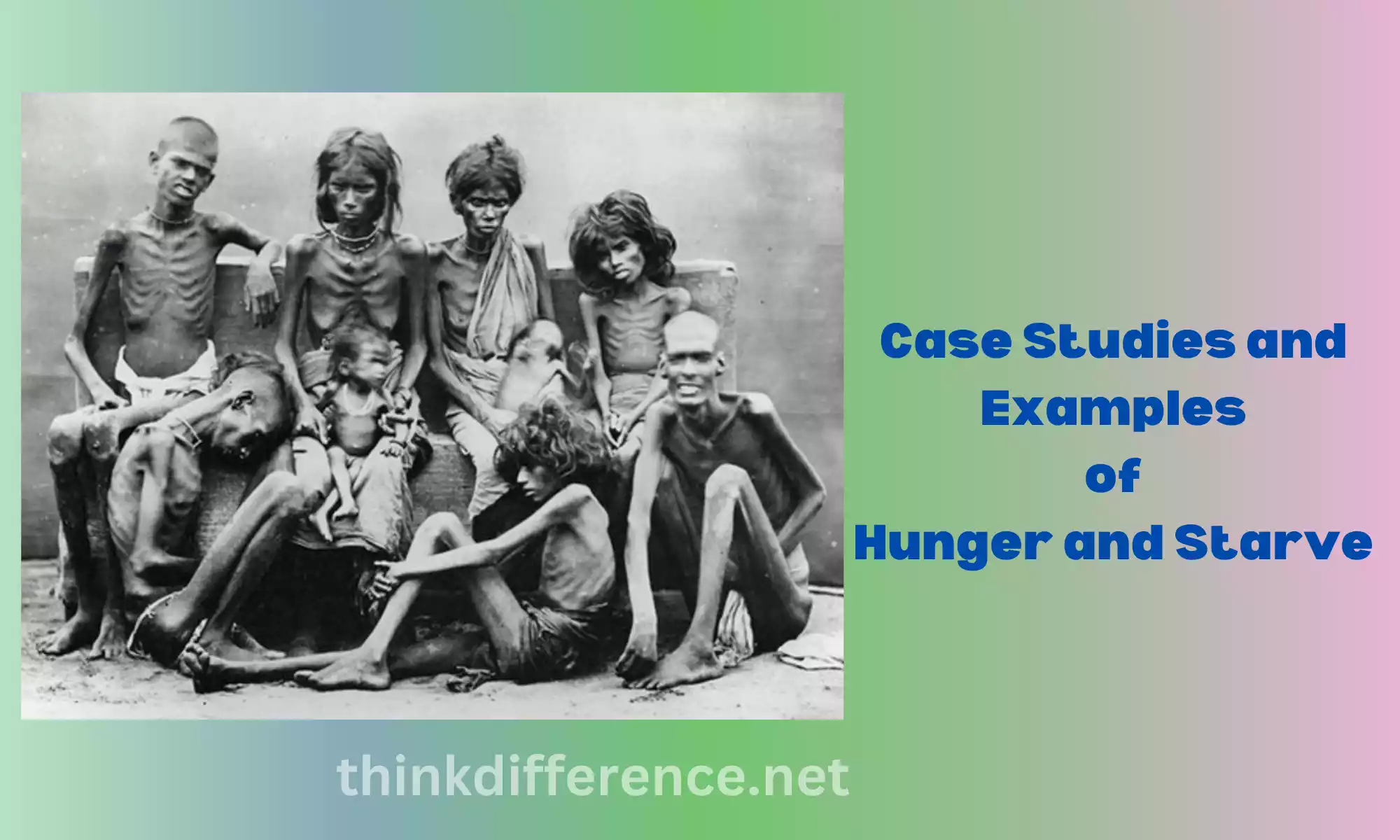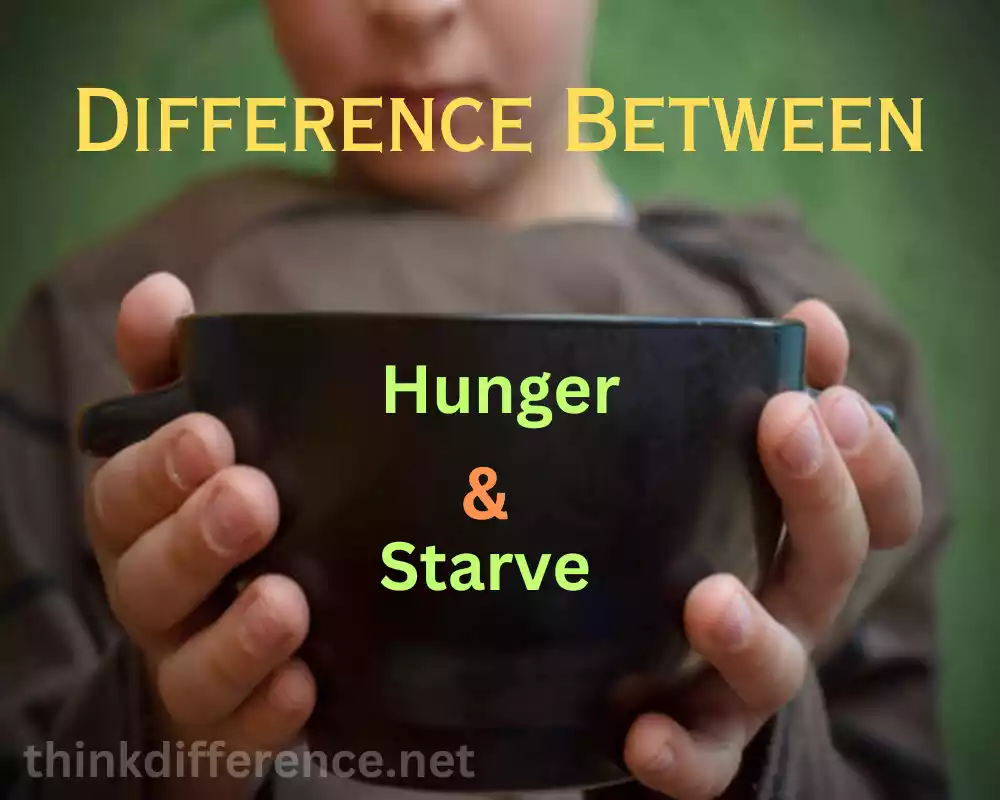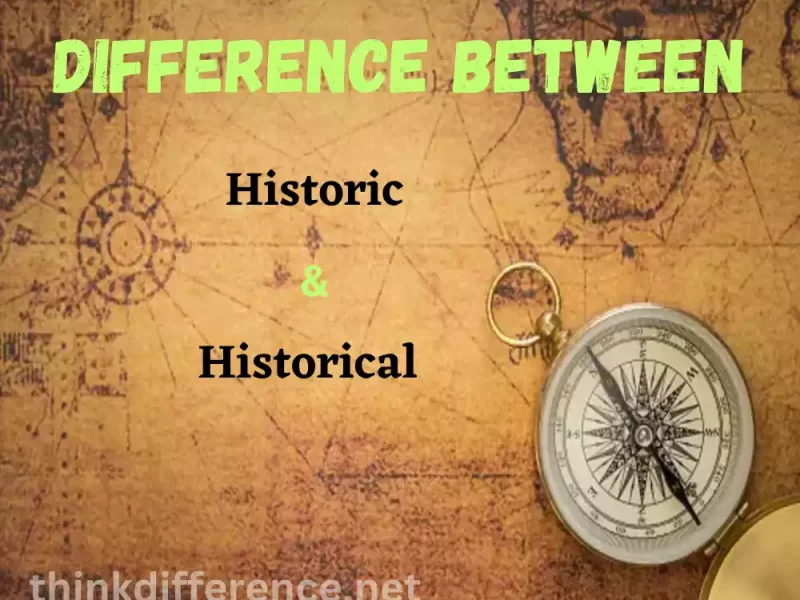Explanation of Hunger and Starve
Hunger and starvation both refer to an inadequate supply of food, yet their severity, duration, and effects vary considerably.
Hunger:
Hunger refers to a sensation or feeling of discomfort associated with needing food in order to remain physically functioning optimally. Hunger is caused by natural physiological reactions in your body which signal it for sustenance – food temporarily alleviates your feelings of discomfort caused by hunger; usually experienced between meals, or after an extended period without eating; your body signals when you need nourishment in order to perform at its highest capacity.
Hunger can result from multiple sources, including limited access to food, poverty, and inequality as well as food insecurity. Hunger may leave individuals and communities feeling powerless in response to its effects, suffering stomach ache or fatigue as a result, difficulty in concentration, or trouble sleeping – satisfying hunger with a good meal can even if this means experiencing discomfort during dining time.
Starve:
Starvation can be defined as severe malnutrition; when individuals or populations go without food for extended periods, starvation results. Without sufficient calories and essential vitamins and nutrients to meet its energy and nutrient demands, starvation sets in.
As part of its survival mechanism, starvation causes your body to begin using stored energy reserves like muscle and fat tissue for vital bodily processes such as breathing. Over time these stores of energy become exhausted causing severe weight loss, muscle atrophy, compromised immunity systems, and impaired organ functions as a result. Starvation has serious detrimental consequences on both mind and body leading to organ failure as well as increased susceptibility to diseases or infections which ultimately leads to organ failure resulting in disease, infections, or even death.
Starvation can result from prolonged food shortages, famines, droughts, war conflicts, displacements, or economic crises; usually associated with emergencies and humanitarian crises.
Hunger can be described as the feeling of needing something to eat that usually subsides after you eat something. Starvation refers to prolonged and severe lack of food that results in malnutrition, physical degeneration, and life-threatening situations. Being aware of these differences helps identify different levels of food insecurity as well as provide appropriate responses from individuals or communities facing these obstacles.
What does Hunger mean?

Hunger can be defined as the physiological sensation or discomfort experienced when energy or nutrients are lacking for our bodies to function normally, fulfilling their biological requirements for nutrition. Hunger serves as an indication that our bodies require nourishment.
Hunger can result from any number of causes, such as poverty, food insecurity, or disruptions in the supply chain. When hungry, individuals often feel weaker and fatigued more rapidly. Food provides temporary relief by giving the body essential nutrition and energy needed for survival.
Hunger refers to chronic malnourishment that impacts entire regions, communities, or individuals for extended periods. Also referred to as chronic hunger or malnutrition, chronic hunger occurs when individuals lack regular access to nutritious food in sufficient quantity or quality; chronic hunger can have adverse health implications like stunted development, compromised immunity systems, and an increase in susceptibility to diseases.
Hunger can result from poverty, inequality, and food insecurity. Strategies to enhance food security through better agricultural practices, sustainable food systems, and equal access to nutritious yet cost-effective meals must be put in place to combat it.
What does Starve mean?

Starve, in its most extreme forms, refers to an extended and severe lack of food that results in extreme malnutrition. Starvation occurs when either an individual or a population is denied sufficient nourishment over an extended period; this denial has life-threatening implications and results in physical and psychological trauma for its victims.
As energy needs increase, your body begins relying on stored reserves such as muscle and fat tissue to meet them. Starvation causes your energy reserves to deplete quickly causing severe weight loss and muscular atrophy as a result. Organ failure and reduced immunity also arise and potentially increase susceptibility to diseases or infections.
Starvation can have devastating impacts on both physical and mental health. Starvation symptoms include fatigue, weakness, and dizziness in physical form; additional impacts include reduced heartbeat rate, decreased body temperature, and cognitive impairment if left untreated; irreparable body damage could even ensue after death has taken place from starvation if left unchecked.
Food availability may be negatively impacted by several factors. These can include prolonged periods of food scarcity, famines, war-time displacements, and economic crises; humanitarian crises due to natural disasters or conflicts may lead to widespread hunger among affected populations.
As immediate interventions to counter starvation may include food assistance, medical treatment, and nutritional support; to prevent future episodes of severe hunger and starvation it is also critical that root causes of hunger be addressed such as conflict resolution, poverty reduction, and sustainable development.
Understanding the difference between Hunger and Starve is vitally important.
Understanding the difference between starve and hunger is of utmost importance for various reasons.
- Effective Response: Acknowledging the difference between hunger and starvation allows us to develop appropriate responses and interventions. Hunger is an all-too-common issue that can be reduced by providing nutritious food, implementing safety nets, and supporting sustainable farming; in contrast, starvation requires immediate lifesaving assistance, medical treatment, or nutritional support as soon as it occurs.
- Aid that Is Targeted: By accurately assessing the severity of any given situation, we can deliver assistance that is more targeted. Hunger relief programs should aim at increasing access and affordability of nutritious food sources as well as agricultural productivity while simultaneously addressing poverty and inequality issues. It’s imperative that anyone experiencing starvation immediately take measures to stop further worsening of conditions.
- Policy Development: Understanding the difference between hunger and starvation can inform both policy development and resource allocation decisions. Governments and other organizations can develop targeted policies and programs that target the root causes of hunger while increasing food security while investing in long-term solutions; emergency preparedness plans can also be created to mitigate crises quickly and respond efficiently when disasters strike.
- Advocacy: By understanding the difference between hunger and starvation, you can both raise awareness about it as well as advocate on their behalf. Effective communications about its urgency and severity help mobilize resources quickly as well as generate support for relevant actions taken against this epidemic. You also create public opinion changes, influence decision-makers directly as well as coordinate collective efforts against starvation altogether.
- Sustainable Solutions: To fight hunger and prevent starvation, both immediate and long-term responses must be implemented simultaneously. Knowing their differences will assist stakeholders in designing sustainable strategies to tackle its causes such as poverty inequality and food insecurity – such as investing in education healthcare systems social protection sustainable agriculture resilient food systems etc.
Understanding the difference between starvation and hunger is fundamental for tailored interventions, policy development, and advocacy efforts that aim to tackle both. Doing so provides an encompassing strategy designed to combat hunger and starvation while protecting all individuals and groups’ right to nutrition and food security.
What is the Difference between Hunger and Starve?
The main difference between hunger and starving lies in their nature, severity, and duration. Here’s a breakdown of the differences:
1. Definition:
- Hunger: Hunger refers to an unpleasant physiological sensation of discomfort or need. Our bodies respond by seeking nourishment.
- Starve: Starving refers to an acute and prolonged state of deprivation that goes far beyond mere hunger pangs. It goes far beyond temporary feelings of being Hungry.
2. Severity:
- Hunger: Hunger can be defined as an unpleasant but temporary state that arises between meals or after an extended period without eating, and is considered normal and acceptable by society.
- Starve: Starvation is one of the more serious forms of malnutrition. When individuals or populations go without adequate food over an extended period, this can result in serious health concerns for themselves and/or all involved.
3. Duration:
- Hunger: Hunger is an intermittent feeling that is usually managed with food consumption. Your body experiences it throughout the day at different intervals.
- Starve: Deprivation from food over an extended period can be defined as starving. Malnutrition occurs due to a lack of nourishment which leads to severe malnourishment.
4. Health Implications:
- Hunger: While hunger may lead to temporary weakness and discomfort, its long-term ramifications should not have serious health impacts if eaten on time. Eating correctly may reduce feelings of hunger while helping restore normal bodily processes.
- Starve: Starvation can have serious health ramifications. It can result in extreme weight loss and muscle atrophy; in its worst form, it could even prove life-threatening if left untreated promptly.
5. Response and Intervention:
- Hunger: To combat hunger effectively, strategies must be put in place which increase access to nutritious food sources while simultaneously decreasing poverty levels. Sustainable agriculture should be promoted along with food safety efforts as necessary; long-term interventions and solutions may often be required to increase the affordability and availability of nutritional foods.
- Starve: Starvation can be an imminent life threat that requires immediate and lifesaving interventions to combat it. Emergency food aid, medical attention, and nutritional guidance may be essential in stabilizing health and halting further decline; during times of emergency or crisis humanitarian relief may also be needed to combat starvation.
Understanding the differences between hunger and starvation is integral for effectively dealing with challenges such as food insecurity, undernutrition, or critical situations in which individuals or communities lack sufficient nutrition. Recognizing these distinctions allows individuals and communities to address needs more effectively by understanding where hunger lies on a continuum between hungry people and starving populations.
Similarities between Hunger and Starve
Hunger and starvation, while two distinct concepts share many parallels.
- Lack of Adequate Food: Hunger and starvation both result from insufficient food resources; both can happen if adequate nourishment is unavailable to sustain us.
- Physical Discomfort: Hunger can result in symptoms including an unsettling sense of fullness in your stomach and feelings of weakness; starvation compounds these effects by leading to fatigue, dizziness, and muscle wasting – additional discomforts which must be endured as part of life.
- Impact on Health: Hunger and starvation both pose risks to one’s health, though hunger’s impacts may be milder and shorter-lived than starvation’s effects. Both conditions may contribute to malnutrition, reduced immunity levels, and an increase in susceptibility to diseases or illnesses.
- Socioeconomic Aspects: Hunger and starvation can both be affected by socioeconomic issues. Poverty, limited access to healthy foods, inequality, and disruptions to food supplies all play a part in fueling hunger or starvation.
- Food Insecurity: Starvation can result from food insecurity. While increasing access to nutritious meals and reducing poverty are effective solutions for combatting hunger, additional efforts must also be undertaken to address cases of starvation and prevent its further worsening.
- Humanitarian Concerns: Hunger and starvation pose humanitarian concerns which require action to ensure human dignity and well-being for those afflicted by these conditions. As part of addressing their root causes and offering support services for those directly impacted, action must also be taken against these conditions to promote the well-being of all concerned.
Hunger and starvation may differ in severity, duration, and immediate impacts; nonetheless, they’re both related problems that underscore the significance of providing everyone with adequate nutritional intake and food security.
Case Studies and Examples
Here are a few case studies to demonstrate how efforts have been undertaken to combat hunger and starvation.

- Zero Hunger Program in Brazil: Launched in 2003 to end hunger and extreme poverty, it provided direct income transfers and encouraged agricultural development, targeting vulnerable groups like small-scale farmers, low-income families, and seniors – thus significantly decreasing poverty rates across Brazil.
- The Green Revolution: India was experiencing severe food insecurity due to an increasing population and low agricultural productivity during the 1960s and 70s, but thanks to The Green Revolution a series of agricultural practices and innovations dramatically increased crop production, and transformed India from a food deficit nation into an independent food provider, helping reduce hunger while providing improved food security for its nation. This successful initiative helped reduce hunger significantly while improving food security.
- The Hunger Project in Africa: The Hunger Project works across Africa as a non-profit organization to empower African women and men to end poverty and hunger themselves. Through partnerships in communities across Africa, The Hunger Project empowers women and men, working towards ending their hunger and poverty.
- Yemen’s Emergency Food Aid Response: Yemen is experiencing a devastating humanitarian crisis as a result of ongoing conflicts and economic collapse, leading to widespread hunger and starvation. World Food Program, for its part, has responded by providing emergency food assistance, nutrition support, and other forms of support to some of Yemen’s most vulnerable population members to stop further decline and save lives while also preventing devastation caused by acute hunger and malnutrition.
- The Sustainable Development Goals: The UN’s SDGs feature a specific target (SDG 2) designed to eliminate hunger, improve nutrition and promote sustainable agriculture by 2030. This global agenda encourages all nations to implement strategies against starvation as well as developing sustainable food systems and guarantee everyone access to affordable nutritious meals.
These case studies and initiatives illustrate various approaches and efforts taken on different levels to combat hunger and starvation. These case studies and examples emphasize the necessity of comprehensive strategies involving governments, organizations, communities, etc. in tackling such problems effectively.
Addressing Hunger and Starvation
Hunger and starvation can be addressed using an integrated strategy, consisting of both immediate relief efforts as well as long-term, sustainable solutions. Below are strategies and actions you can take to face this problem head-on.
- Access to Food: Increase access and availability by expanding social safety nets and income support programs for vulnerable populations, improving food storage infrastructure and transportation networks as well as aiding small-scale producers who wish to increase production.
- Address Poverty and Unemployment: Tackle Hunger and Starvation by combatting inequality and poverty with policies designed to promote inclusive economic development, create employment opportunities that guarantee fair wages, reduce disparities in resources or opportunity, and foster inclusive growth.
- Enhance Agricultural Production: To boost agricultural production and ensure food safety, investing in sustainable practices such as sustainable agricultural research and technology transfer as well as climate-resilient farming techniques such as efficient irrigation systems with quality seeds and fertilizers are important investments for increasing productivity and ensuring food safety. Also important are agricultural extension services which support such investments.
- Strengthen Social Protection Systems: Develop and enhance social protection networks that offer safety nets to vulnerable populations, such as cash transfer programs and initiatives to feed children at school. As well as targeted nutrition interventions that ensure individuals and families access adequate nutrition.
- Enhance Nutrition and Health Services: To address malnutrition and its long-term consequences, and provide access to high-quality healthcare for pregnant women and children undergoing gestation. Implement nutrition education programs promoting breastfeeding as well as healthy eating practices.
- Foster Sustainable Development: Advance sustainable development initiatives and goals geared at eliminating poverty, decreasing inequality, and guaranteeing food security and nutrition to all. This includes creating international partnerships to aid sustainable agriculture development projects in vulnerable regions as well as infrastructure enhancement.
- Humanitarian Response and Crisis Response: When humanitarian crises strike, you can provide immediate food aid, medical attention, nutritional supplements, and support services to combat acute hunger. Coordinating your efforts with international organizations, NGOs, and governments for an efficient response as well as resource mobilization is of utmost importance for an effective outcome.
- Policy and Advocacy: Advocate for policies that prioritize nutrition issues by increasing awareness about malnutrition and hunger as human rights violations, food insecurity, and nutrition security as a right. Engage policymakers, civil societies, and private sectors in driving positive changes effectively while allocating scarce resources efficiently.
Combining short-term relief with sustainable long-term solutions is the optimal approach to combatting hunger and guaranteeing that individuals and communities have sufficient nourishing foods for healthy, productive lives.
Conclusion
Hunger and Starve are urgent global challenges that require immediate action and sustainable solutions. Addressing the root causes of hunger, supporting initiatives and organizations, and implementing effective policies can help us build a world where no one has to suffer from hunger. Together, we can create a future where everyone has access to sufficient and nutritious food, breaking the cycle of hunger and paving the way for a healthier and prosperous world.



